WidgetKit 开发实战 1- 初识 iOS 小部件
文章目录
【注意】最后更新于 June 25, 2020,文中内容可能已过时,请谨慎使用。
前言
2020 年 06 月 22 日的 WWDC 上 iOS14 的新特性 - 小部件正式在 iOS 上线,同时 WidgetKit 也正式面向广大开发者使用。
此帖开始记录学习 WidgetKit 的经历, 同时开源了 - iWidget 作为 WidgetKit 的简单演示,看完这篇文章认为有用可点个 Star。
项目地址: https://github.com/Littleor/iWidget
初识 iOS 小部件
1. 下载 Xcode12
开发 Widget 需要使用到 Xcode12,目前依旧是 beta 版本,需要在官网使用开发者账号下载。
开发者账号的注册是免费的,使用 AppleId 注册后直接下载使用即可。
具体步骤网上有很多,这里不再赘述。

2. 创建一个项目
欲使用 WidgetKit 必先创建一个 iOS 的项目,按常规操作来即可。
点击 Create a new Xcode Project 来创建新项目
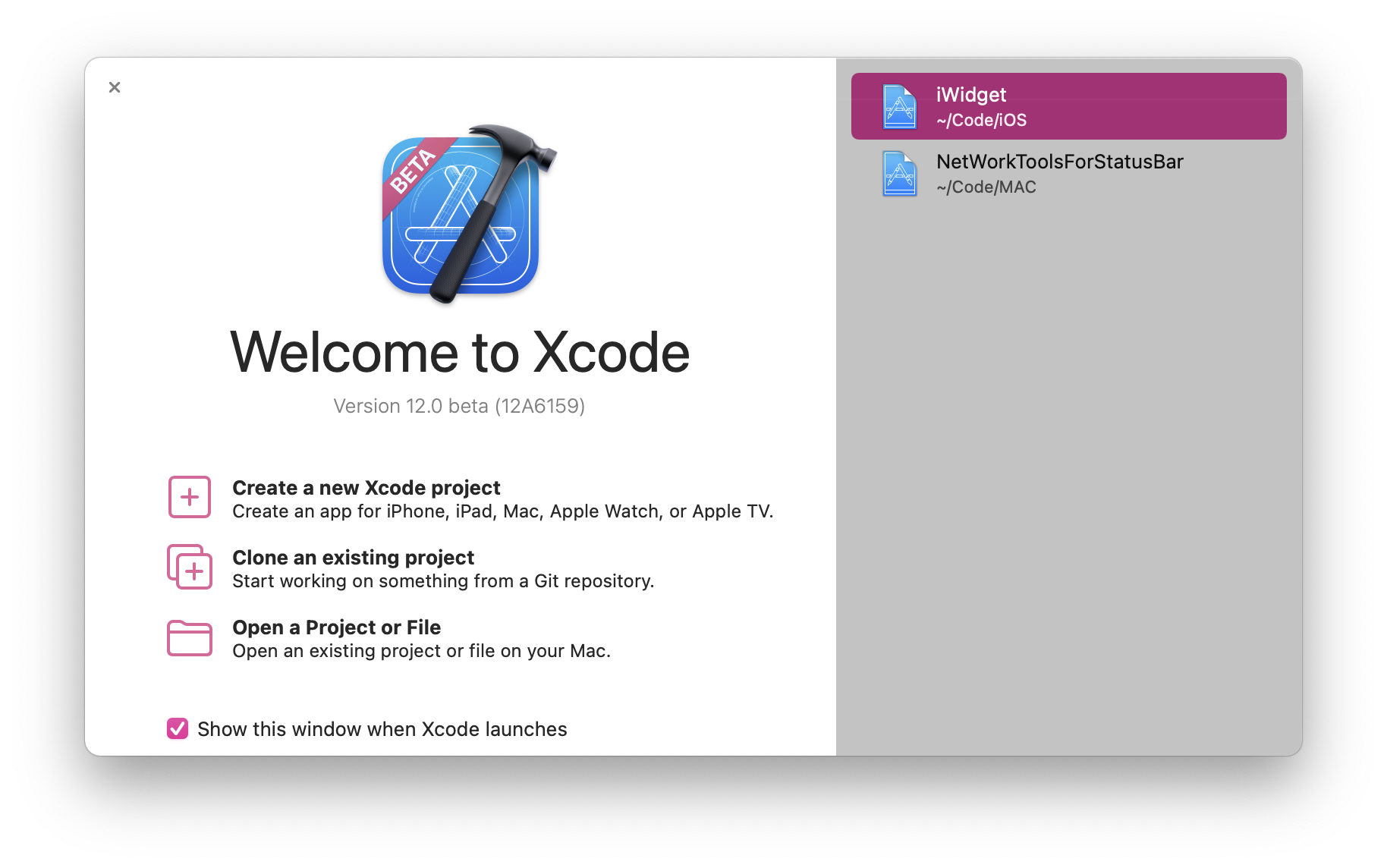
选择 iOS->App 再点击 Next
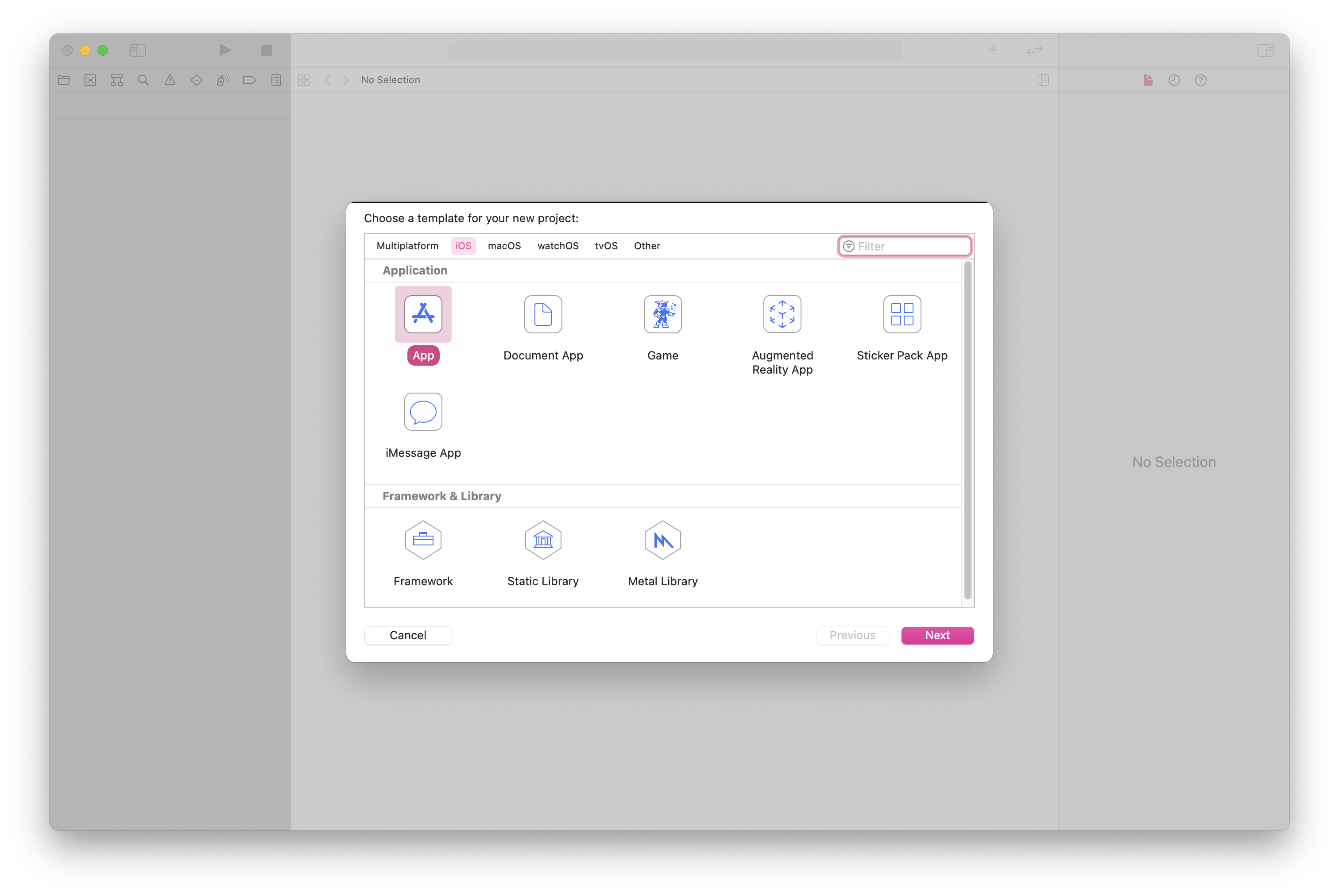
Name 随便填,Organization Identifier 填写翻转域名即可。

创建完成就出现默认的 Hello World! 啦
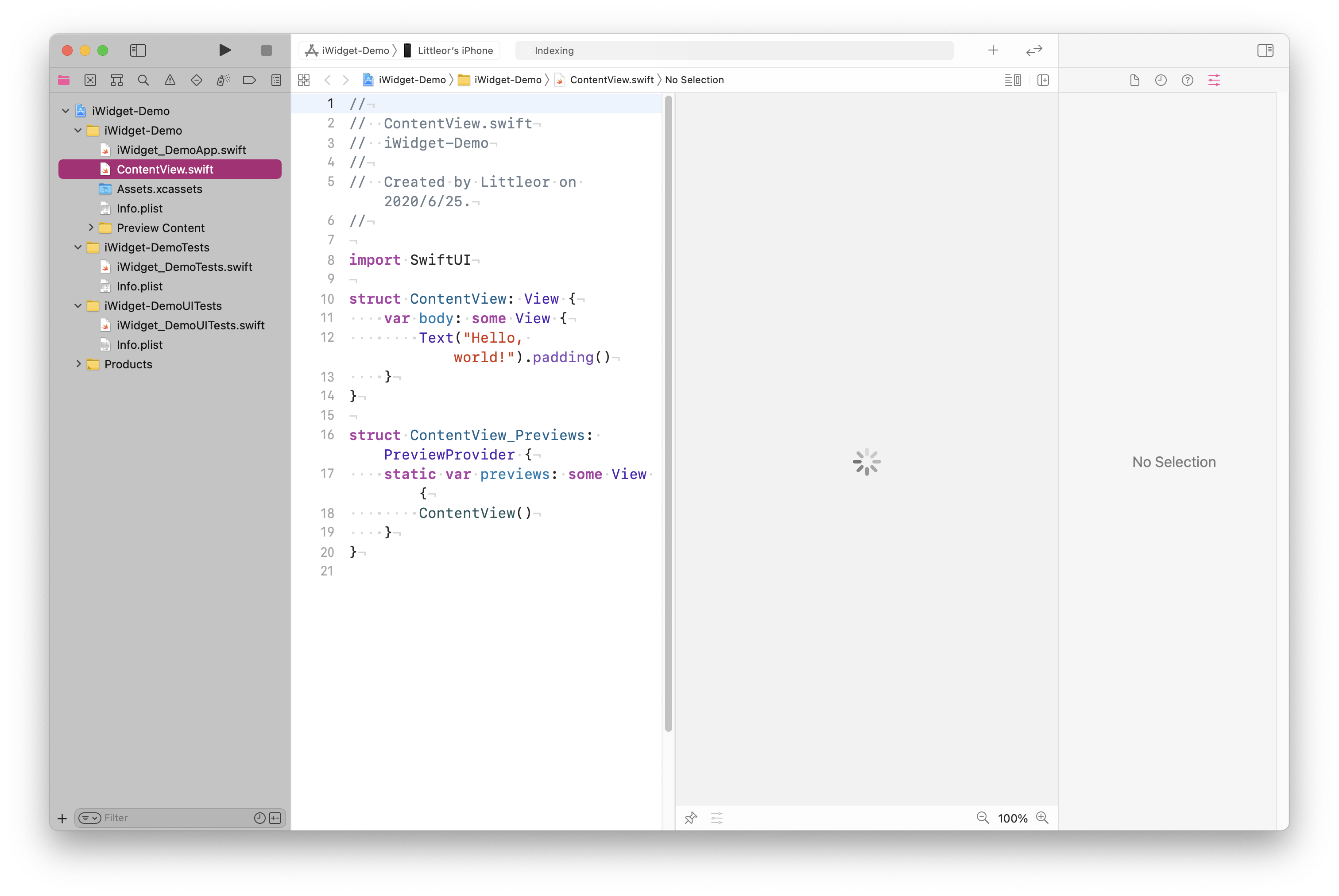
3. 开始使用 WidgetKit
首先点击左上角的 File->New->Target 添加 Target
 然后选择 Widget Extension
然后选择 Widget Extension
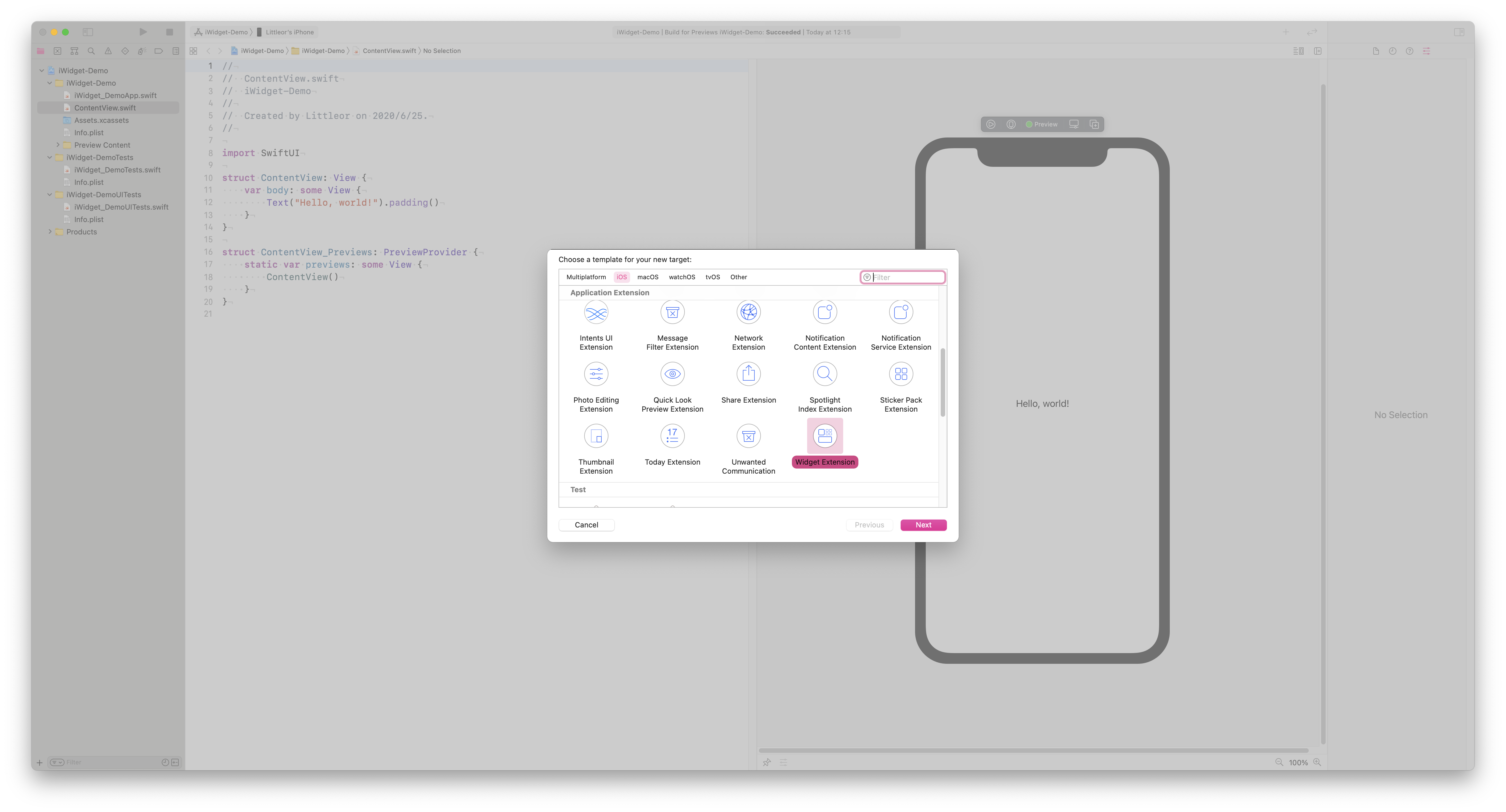 配置 Wiget 即可,Name 和项目名字不能一样哦
配置 Wiget 即可,Name 和项目名字不能一样哦
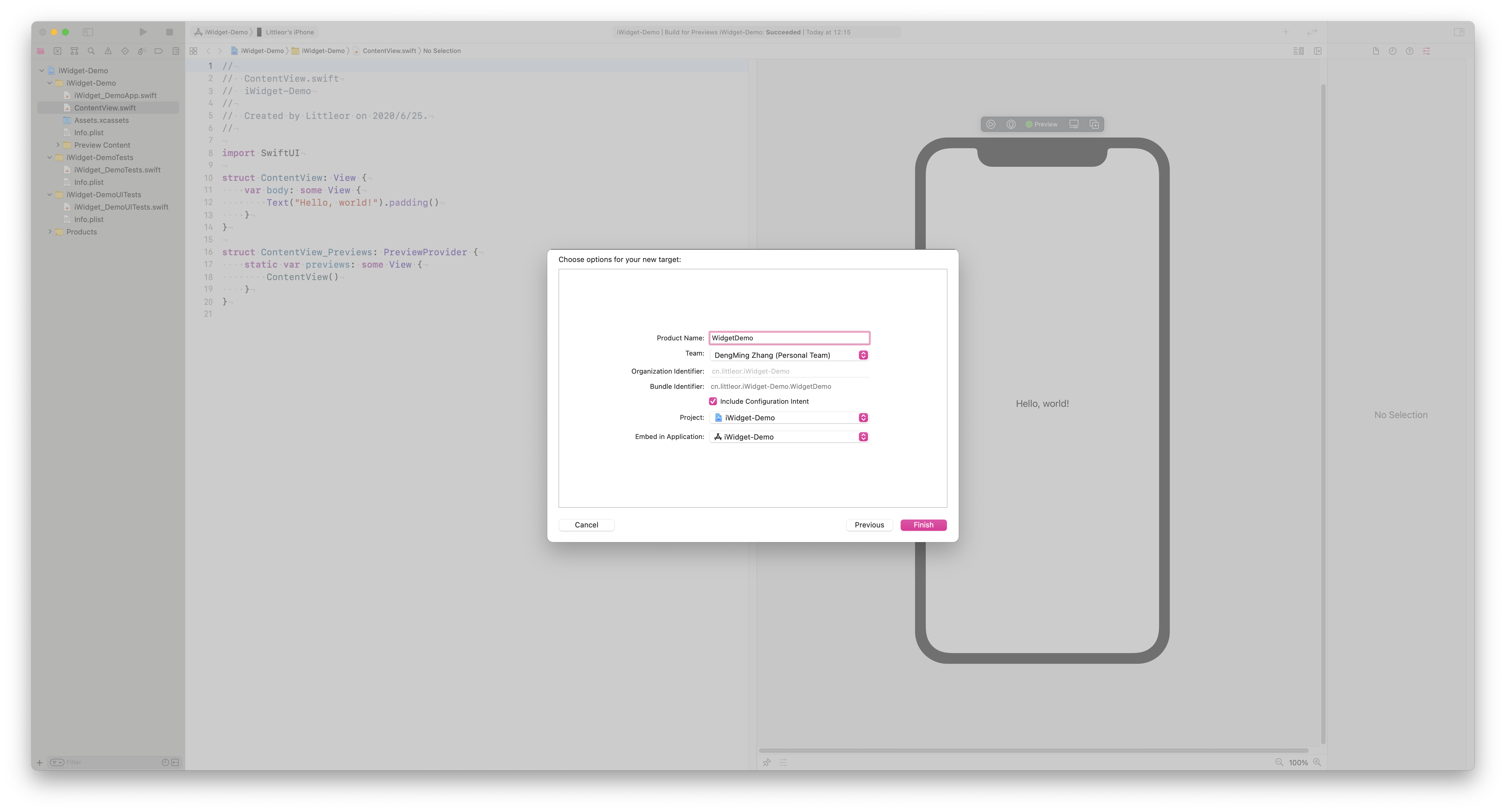 点击 Finsh 之后 Xcode 就会帮你自动生成一个默认的 Widget 文件了
点击 Finsh 之后 Xcode 就会帮你自动生成一个默认的 Widget 文件了
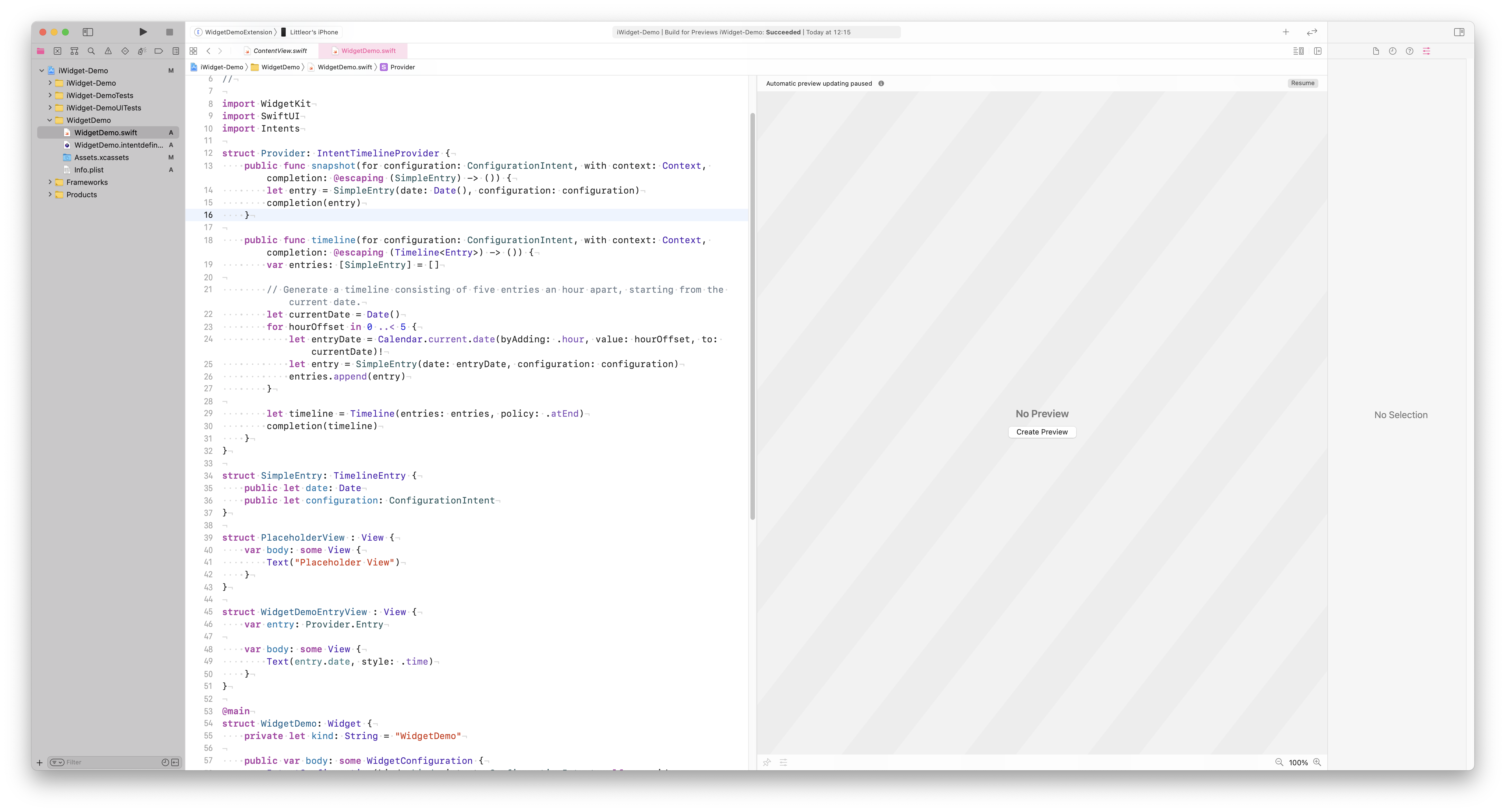 运行到 iOS14 设备上后就可以看到默认的时钟 Widget 了!
运行到 iOS14 设备上后就可以看到默认的时钟 Widget 了!
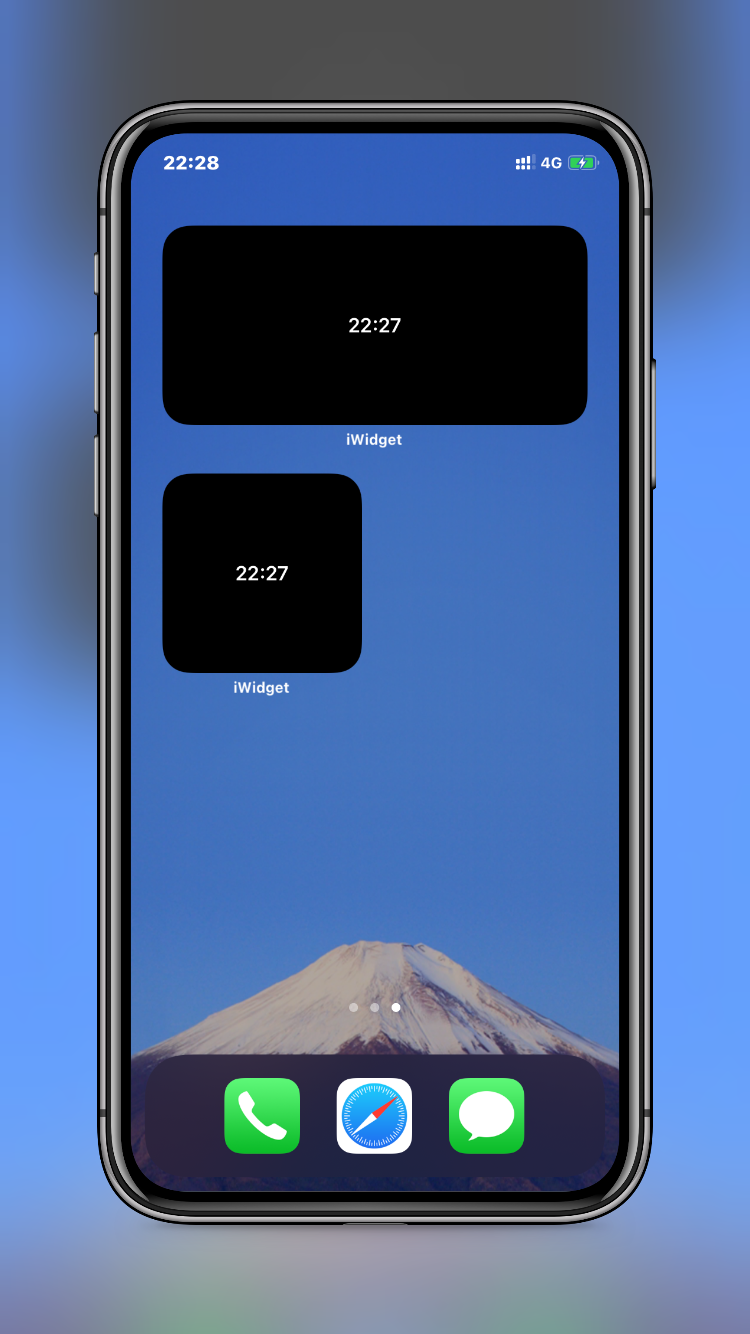
4. 默认 Widget 文件结构分析
1.Provider
Provider 实现了
IntentTimelineProvider,主要用于提供数据和控制数据的刷新,其中有两个关键函数:public func snapshot(for configuration: ConfigurationIntent, with context: Context, completion: @escaping (SimpleEntry) -> ())
和 public func timeline(for configuration: ConfigurationIntent, with context: Context, completion: @escaping (Timeline<Entry>) -> ())
,其中 snapshot 会在 Widget 被添加的时候执行,timeline 通过 Timeline(entries: entries, policy: .atEnd) 刷新数据和控制下一步刷新时间.
|
|
这里只写如何使用,具体内容下一篇细述。
2.SimpleEntry
SimpleEntry 实现了 TimelineEntry,主要用于保存 Widget 的数据。
|
|
3.PlaceholderView
PlaceholderView 用于显示默认 Widget,当 Widget 还没获取到数据的时候会默认显示这里的布局。
|
|
4.WidgetDemoEntryView
WidgetDemoEntryView 是 Widget 的布局部分,是 Widget 的 View 的部分。
|
|
5.Widget
这里可以说是 Widget 的入口了罢,这里定义了 Widget 的 Kind、Provider、View 等。
|
|
5. 如何创建多个 Widget?
iOS 创建多个小部件不能像 Android 一样直接建立多个 Widget 的配置文件,否则会报错,而是可以直接修改当前 Widget 的入口文件即可,Apple 提供了相关 API:
|
|
改变 @main 为 WidgetBundle , 再创建多个 Widget 的 struct 即可。
后记
后续还会慢慢完善 WidgetKit 开发的文章,同时 iWiget 也会不断完善。
文章作者 Littleor
上次更新 2020-06-25